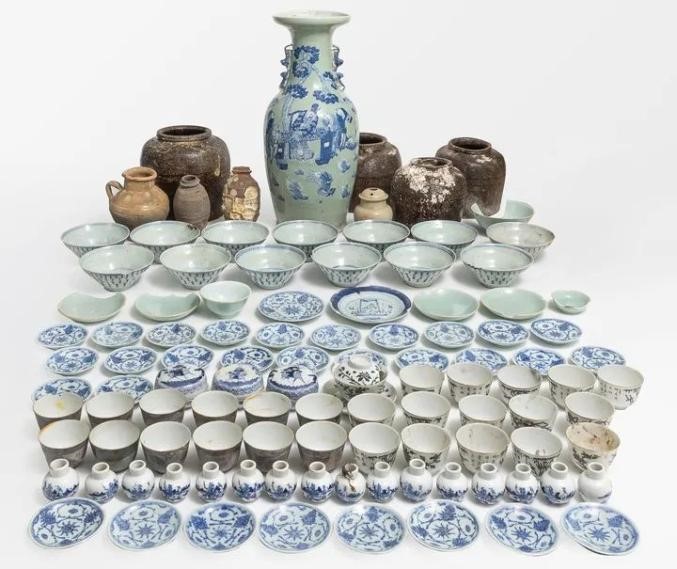
Part of the cultural relics found in the Yangtze No.2 Ancient Shipwreck (file photo)
The salvage of Yangtze No. 2 Ancient Shipwreck, the largest and best-preserved wooden shipwreck carrying a sheer variety of cultural relics, started from March 2, 2022.
Yangtze No. 2 Ancient Shipwreck is a merchant vessel from the reign of Emperor Tongzhi (1862-1875) in the Qing dynasty. It is currently sunk in the waters of Hengsha shoal in the northeast of Hengsha island in Chongming District, Shanghai. According to the archaeological investigations, the ship with exquisite porcelains from Jingdezhen kiln and other relics, is about 38.5 meters in length and 7.8 meters at its widest in the middle. Yangtze No.2 Ancient Shipwreck is the largest archaeological and protection project of ancient shipwreck both nationwide and overseas, as well as the first project in the world that involves archaeological discovery, overall relocation, cultural relic protection and museum construction.
According to Fang Shizhong, head of Shanghai Municipal Administration of Cultural Heritage, Shanghai is one of the important trading ports along the Maritime Silk Road. In modern times, it rose to metropolis and a port that found fame around the world. Yangtze No. 2 Ancient Shipwreck is a living proof that Shanghai once served as a world trade and shipping hub as well as a crucial node along the Belt and Road.
The underwater archaeology of Yangtze No. 2 Ancient Shipwreck salvage is expected to be completed in 2022. After being salvaged, the sunken ship will be moved to Dock No. 1 at the site of the old Shanghai shipyard. In the near future, the old dock also built during the reign of Emperor Tongzhi in the Qing dynasty will be renovated into an archaeological base for this sunken ship and a museum of the ancient shipwreck, in which the archaeologists will study the origin of this mysterious vessel.
Source: Xinhua News Agency
Photo credit: Shanghai Municipal Administration of Cultural Heritage
